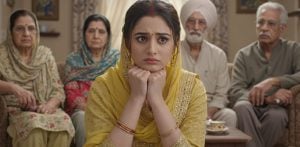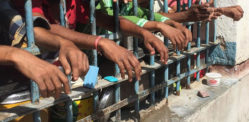"The staff strip inmates to see if they're menstruating"
In the complex landscape of Indian jails, the experiences of female prisoners occupy a particularly challenging and often overlooked corner.
Incarceration in India has historically been fraught with issues of overcrowding, inadequate infrastructure, and questionable treatment of inmates.
Within this milieu, South Asian women face a unique set of challenges that reveal a troubling intersection of gender disparities and social flaws in the criminal justice system.
These women, often marginalised and vulnerable, are thrust into an environment that raises serious concerns about their safety and basic human rights.
This deep dive into the conditions and treatment of South Asian women in Indian prisons will shed light on their harrowing experiences.
These accounts, drawn from firsthand reports, underscore the urgent need for reform within the Indian penal system.
This exploration will delve into the voices of those who have survived these conditions and those who advocate for change.
Understanding the Demographics
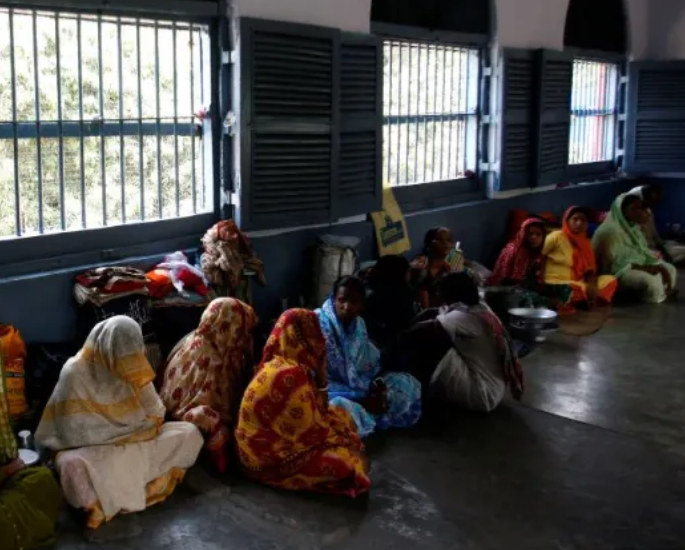
Before delving into the experiences of South Asian women in prison, it’s essential to grasp the demographic landscape.
South Asia is a diverse region comprising countries like India, Pakistan, Bangladesh, Sri Lanka, and Nepal.
South Asian women in prison come from various cultural and socioeconomic backgrounds, making their experiences diverse yet interconnected.
While it can be challenging to obtain comprehensive statistics due to the limited availability of data, we can glean insights from various sources and studies.
South Asian women in prison face specific health challenges, including mental health issues and inadequate access to culturally appropriate healthcare services.
However, these elements are heightened in India due to the gender disparities, lack of infrastructure, and conditions of prisons.
In 2021 The Wire stated:
“Of the 1,350 prisons in India, just 31 are reserved for women, and only 15 states and union territories have separate women’s jails.
“Everywhere else, female prisoners are housed in smaller enclosures within men’s prisons – a prison within a prison, so to speak.”
According to the figures, as of 2023, by the National Crime Records Bureau (NCRB), the number of female prisoners in India was 22,918 at the end of 2021.
However, the capacity of the 32 women’s jails in the nation can only host 6,767 prisoners.
While the occupancy rate for female inmates in other prisons stands higher at 76.7%, it misleadingly suggests that women prisoners do not face spatial constraints.
However, a closer examination of the state-wise distribution of facilities reveals a starkly different picture.
Many states grapple with severe overcrowding issues, rendering the national average a deceptive veil over this pressing reality.
How Prisons are in General
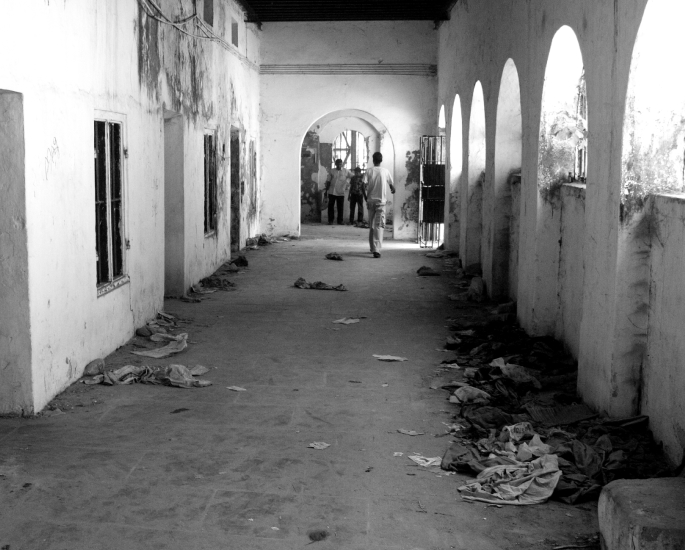
In order to understand just how difficult it can be for prisoners, let alone female prisoners, in Indian jails, Tejasvita Apte, a lawyer from India shared her experiences online.
She mentions she visited jails as a student and lawyer and was taken back in both instances by how much the country fails to invest in its prison system.
Some people argue that these people have committed crimes so it shouldn’t matter the conditions they live in.
To some extent, this may be true, but it’s unfair to treat all prisoners the same when some crimes are worse than others.
You cannot justify a murderer being treated the same as someone who stole a drink from a store. But, this is the case in most jails in India.
And, as women prisoners are taken advantage of in general, it’s important to recognise how jails are in general in the country. Apte reveals:
“Food on time? Yes. The quality is mediocre. Gang influence? Hell yes. Do the authorities beat up people? Yes.
“Indian jails are overcrowded. An average day in the life of a prisoner is hard. Most prisoners wait, to be visited by their family or lawyers.
“I feel sad to say that a lot of prisoners, especially the ones who cannot afford good legal aid, aren’t visited by their lawyers.
“They aren’t aware of the status of their cases. The Yerwada jail has an excellent library. Few prisoners make use of it. Most aren’t educated enough.”
Furthermore, the experience of an under-trial prisoner can be even more challenging.
They have not been convicted of any crime, yet they can spend years behind bars awaiting their trial.
The state of healthcare and psychological assessment for prisoners remains at a rudimentary stage in India, signifying a substantial need for improvement.
Surprisingly, some prisoners find themselves in a paradoxical situation where they feel safer within the confines of the jail than in the unpredictable outside world.
Inside prisons, mosquitoes are a constant nuisance, and inmates receive minimal protection from these pests.
Regrettably, instead of serving as institutions for rehabilitation, prisons often inadvertently contribute to the further hardening of individuals involved in criminal activities.
Apte concludes her comments by stating:
“While various prison reforms have been recommended over the years (the prominent one being the Mulla committee), they still haven’t been implemented.
“Research into crime, criminality, and the social, religious, and economic backgrounds of criminals is in its infancy in India. A lot needs to be done in this regard.”
Moreover, there are a lot of shared stories where female prisoners have expressed their personal tales of jail time in India.
One anonymous person said on Quora:
“I am a 25-year-old girl, unmarried, who was arrested on the charge of property theft.
“Upon entering the jail premises I was taken to a dark room where all the external jewellery and all the outfits were taken away from me.
“Then a lady constable told me to remove my clothes and my undergarments.
“I felt so humiliated that I can’t explain it in words. It was the first time I ever stood naked in front of anyone.
“I used to study in a college and I had a boyfriend. Even in front of him, I had never been naked.
“After being kept naked like an animal, I was forced to stand naked in front of the constables for about 10 minutes and then they provided me with the jail clothing which was absolutely dirty and loose fitting.
“They gave me a white saree to wear which I had no experience of wearing as I was a college-going student and I lived in a metro city.
“The cell which I was locked in for about one and half years was very dirty and it did not have proper ventilation.
“In a small room made for about 10 girls, about 25 were forced to live in it.”
“I was continuously tortured and many times I was supposed to stand naked in front of the female constable and we were forced to clean the toilet with our hands.
“We would have to share our undergarments and clothing with other prisoners which was very disgusting.
“There is no hygiene for girls and women in prison.
“During our periods, we were forced to stand naked to show that we were really menstruating.”
Whilst India is notorious for overcrowded prisons, this story emphasises the type of events females have to go through.
However, this is just the tip of the iceberg, and it’s vital to hear from more women in order to understand how prominent issues around treatment and conditions are.
First-Hand Accounts of Female Prisoners
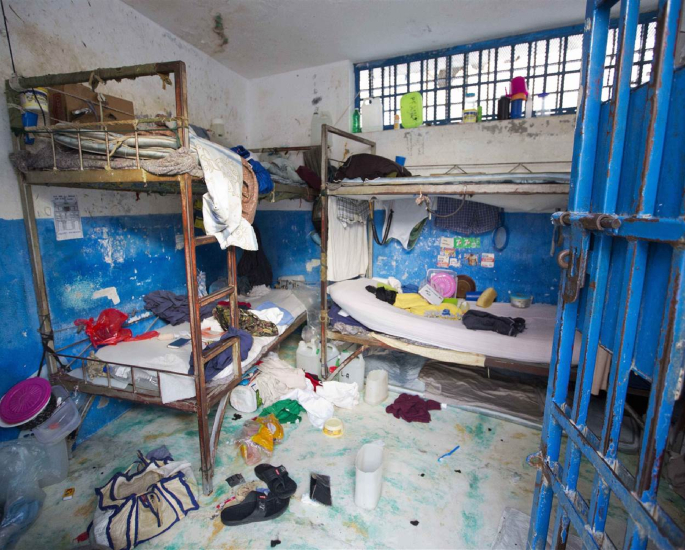
Whilst searching for current or former prisoners willing to speak of their experiences is difficult, there are some personal accounts on QUORA.
Although, it’s important to note that these stories only highlight a crumb of the problem.
An anonymous person shared how his mother is currently under trial in a Delhi prison, and has been since 2016.
Whilst speaking on Quora, he shared how his mother is well-educated and, therefore is treated a little better than others:
“The female police staff takes her help in reading and writing duties, like maintaining in and out the time of staff, teaching kids of other inmates.
“So my mother teaches them and she gets paid for that (like INR 50 per class or something of this sort, I don’t remember the exact amount she gets paid).
“A couple of months ago a female inmate who is a bully and tries to bully everyone threw hot tea on my mother and her neck and breast got burnt.
“The reason she did this was because my mother had the duty that evening to serve tea to all inmates and she asked this bully to come in the queue.
“The bully got offended and threw hot boiling tea on my mother.
“These sorts of incidents are quite common in the jail.”
Despite being well-treated in jail, and having the trust of the policewomen, it shows that any person can suffer.
And, even with the added protection of guards, this person’s mother was still subject to a painful act.
It’s unfortunate to think how many women go through these types of ordeals and are forced to remain silent.
A second person also added their story, saying:
“I am 29 years 29-year-old unmarried woman and have spent almost six years in jail.
“Indian prisons are hell, not only for men but for women also.
“Life is not easy, and it shouldn’t be easy also, I agree be it a man or woman. But certain things should be changed.
“I was told to remove my underwear and bra and told to stand naked for 30 minutes.
“Four days after my period, one lady official came near me, with a thick bamboo stick, ropes, and two rods.
“I was told to stand naked, I resisted and two other ladies removed my clothes. I was crying.
“After that, they tied me against a wooden frame in the room and started to beat me.”
“They hit me on my buttocks, thighs, arms, and legs. I had severe bruises. I was beaten very badly that day, they didn’t tell me the reason.
“After turning my ass black and blue they went away to another cell to beat another woman.
“In prison, you can hear cries of other ladies, who are getting beatings by police officers.
“In jail, there is no privacy, others can see your private parts. Even no privacy in the toilet. The food served is not good.
“Once a month, a very good body massage is compulsory for every woman in prison, in the form of harsh canings, and beatings.
“No relatives come to meet us, they feel women can’t commit any mistake. We are abandoned.
“Some relatives take away children when they turn above six years old and their mother is left alone and has to repent over her mistakes.”
A third person revealed:
“Yes, they treat prisoners as slaves or animals are treated in daily life.
“I am a 27-year-old girl and I went to jail in a drugs case due to my mistake.
“Upon arrest, I was taken to a local police station where I was held for the next 19 days. Yes, 19 days!
“I was locked in female lockup for 19 days continuously.
“The lockup is the worst place you can ever imagine. It’s a 9×7-foot room with no proper ventilation, open toilet, and no doors.
“In the same cell, you are with four other females at the same time. The cell stinks off like hell.
“Most dirtiest part of my jail life was I did not take a bath for 28 days in the hot summer of India. There was no fan in the cell and it felt suffocating.
“I requested some easy clothes like t-shirts, pyjamas, or salwar kameez but they said it’s not in stock and ‘either you wear this or don’t wear anything at all’.”
In a report from the Hindustan Times, they looked at how some women are forced into prisons with their children.
In an excerpt of their investigation into two Mumbai prisons, they revealed:
“Some 1,000 women jailed in a space meant for 150, each making do with one bar of soap to bathe and to wash clothes for a whole month.
“Their children grow up knowing little about the outside world, unable to recognise even cats and dogs.”
This is an account of a woman prisoner reported by The Hindu:
“While men can go freely to the judicial department, women cannot. They have to rely on the women’s prison staff to get information.
“Women’s bodies are always at the centre whenever a man is around.”
“There is this obnoxious practice, in which on the first day when a woman inmate has to present herself [called ‘mulayaja’] before the superintendent of the jail.
“She is ordered to remove her footwear and is forced to cover her head with a pallu or dupatta. When asked why, different answers were given.
“One woman jailor said, it is our culture. Another officer reasoned it is to maintain discipline. A third denied that this practice exists.
“In the Nagpur prison, if a man is going to come to the woman’s section, the women are shoved away and hoarded in a corner.
“The staff strip inmates to see if they’re menstruating.
“Then there is ‘open zadti’ [in which an inmate is examined naked], censorship of newspapers, lack of reading material in jail, and no PCO facility.
“The quantity of food given to male and female prisoners differs. The attitude is that women eat less than men.
“We can also see the difference in what men and women are taught in prisons.
“In Nagpur jail, men are taught carpentry, leadership development, how to deliver speeches, etc.
“Women are taught typical ‘womanly’ things like sewing, knitting, embroidery, rangoli, painting and making decorative items, and beauty parlour services.”
These thoughts, views, and ordeals explain how differently women are treated in these jails.
Whilst this can’t be generalised to every single prison in India, the overwhelming evidence is in favour of harsh conditions and treatment of female prisoners.
Real-Life Cases
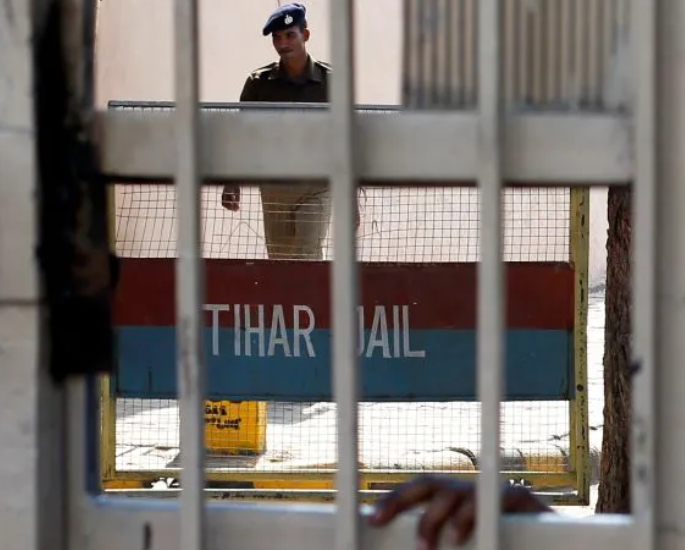
To better understand the conditions and journeys of Indian women in jail, we have to look at some harrowing cases in the country.
These events highlight the disparities in treatment between male and female prisoners.
Maloti Kalandi, the wife of Badal Kalandi, along with their children, was rescued from a trafficking situation and placed under the custody of the Tamulpur police station.
The station had the intention of ensuring her safety.
Tragically, the intended protection turned into a horrifying ordeal when Sub-Inspector Sahidur Rahman summoned Maloti Kalandi to his official quarters and subjected her to a grievous act of sexual assault.
Furthermore, there have been distressing accounts from women who have served prison sentences in Tamil Nadu, revealing a pattern of torture and cruel treatment.
These women have recounted instances where they were forcibly disrobed, verbally and physically abused, and deprived of even the most basic facilities.
In shocking detail, Parameswari of Madurai described how she was stripped naked by convict wardens in the presence of jail staff and fellow inmates, enduring both verbal and physical abuse.
Similarly, two other prisoners, Munniammal and M. Muthulakshmi, shared their harrowing experiences.
Munniammal, incarcerated for robbery, and Muthulakshmi, arrested for involvement in illicit liquor brewing, revealed that they were given meager gruel to eat during their time in prison.
They also disclosed that they were crammed into cells with as many as four to eight prisoners, compelled to use a small corner as a makeshift toilet without the basic privacy of a curtain.
In another shocking incident at Tihar Jail, a female prisoner facing trial for cheating and forgery accused a jail warden of subjecting her to severe torture.
The incident was aided by an HIV-positive fellow inmate in an extortion scheme.
She alleged enduring a brutal beating for an hour while the deputy superintendent and other jail staff remained passive observers.
Furthermore, Ms. Saradha, a prisoner remanded by the Judicial Magistrate, suffered a grave violation of her dignity upon her arrival at the Special Prison for Women in Vellore, Tamil Nadu.
She was forcibly undressed, dragged naked for an extended period, and placed in solitary confinement without her clothes being returned to her.
Astonishingly, no prison official intervened or offered assistance during this traumatic event, leading the court to award her a compensation of 50,000 rupees.
Finally, Soni Sori, a 35-year-old tribal schoolteacher, and mother, faced sexual violence under the direction of the Superintendent of Police (SP) while in custody at a police station in Chhattisgarh.
She endured repeated electric shocks, had her clothes forcibly removed, and was subjected to verbal abuse and humiliation by the SP while he observed her ordeal from his chair.
Although one could argue that both male and female prisoners suffer harsh ordeals, it’s clear that women are exposed to more personal abuse.
In some cases, their bodies, dignity, and minds are broken by those sworn to protect them – regardless if they committed a crime or not.
Why Has No Progress Been Made?

The main issue as to why there has been no impactful change towards female prisoners is because of the stigma attached to going to prison.
Several contextual factors contribute to the unique experiences of South Asian women in prison.
For example, cultural expectations and stigma often discourage South Asian women from reporting abuse or seeking help, which can result in their involvement in criminal activities.
Also, many South Asian women in prison face language barriers, making it challenging to navigate legal systems or access essential services.
Additionally, women may face isolation and discrimination within prisons due to their ethnicity or beliefs, which can exacerbate their trauma.
Rani Dhavan Shankardass, the President of Penal Reform International, writes in her 2020 book Of Women ‘Inside’: Prison Voices From India:
“Prisons may classify prisoners according to their legal offences but a prison’s social grouping, especially in a women’s prison, is not all about legal offences.
“It’s about them having crossed the barriers of social and moral taboos set out over the ages by custom, tradition, and often religion, and are expected to be a stronger sanction than the law.”
Women in prison often endure a more distressing existence than men.
Their own family members tend to gradually distance themselves and ultimately abandon them.
Many women find themselves trapped in lengthy periods of pretrial detention with little prospect of legal recourse and no familial support.
Furthermore, their security is compromised by unfeeling jail personnel, predominantly male officers.
Moreover, incidents of crimes committed against women within the prison compound often go unaddressed due to a lack of belief and advocacy, leaving them in a vulnerable position.
The journey of female prisoners in India is marked by a complex interplay of cultural, socioeconomic, and legal factors.
These women face unique challenges that require a nuanced understanding and targeted interventions.
To address these issues, it is crucial to promote cultural sensitivity within the criminal justice system, provide access to mental health support, and address the root causes that lead to their incarceration.
By shedding light on their experiences, we can take steps toward a more equitable and just society for all.













































